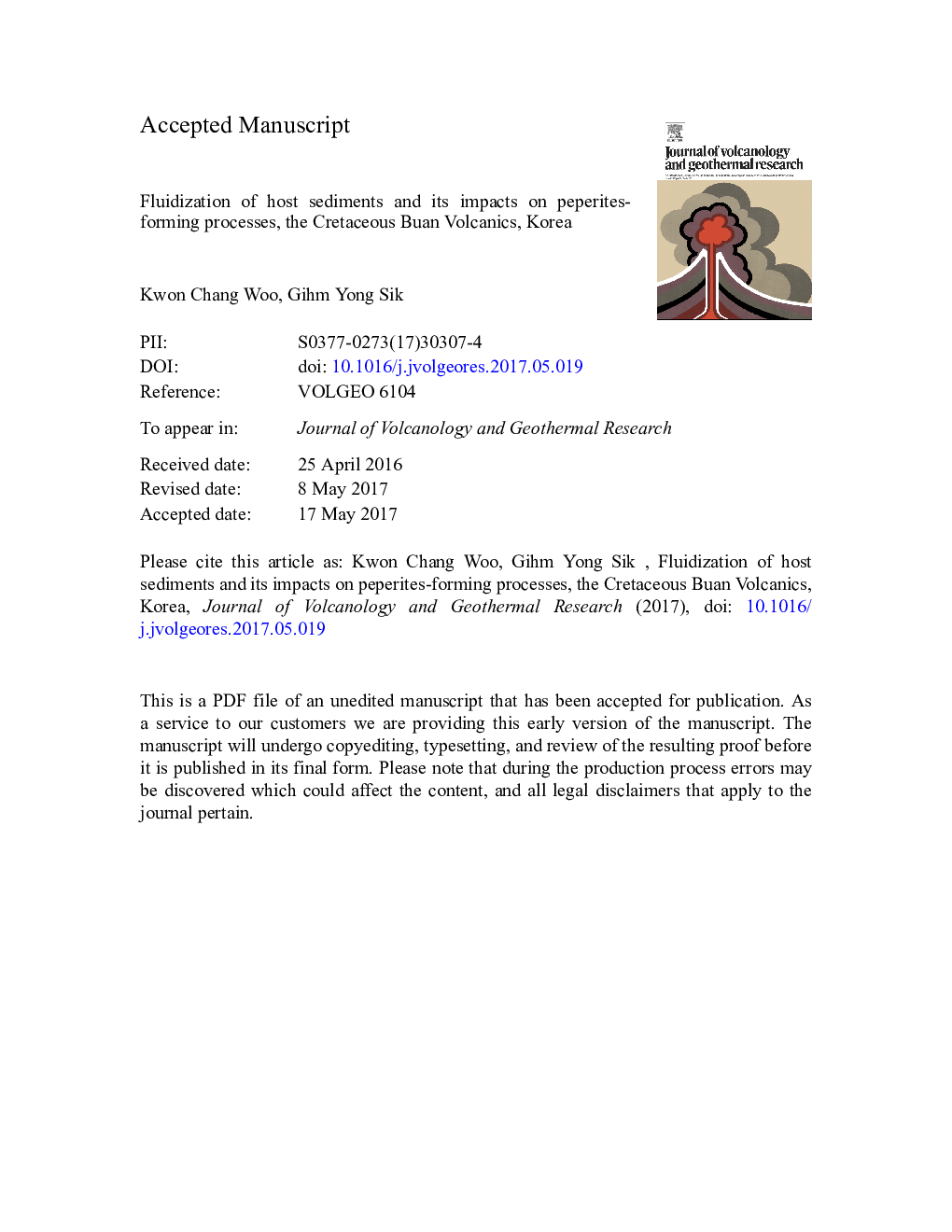| Article ID | Journal | Published Year | Pages | File Type |
|---|---|---|---|---|
| 5783829 | Journal of Volcanology and Geothermal Research | 2017 | 38 Pages |
Abstract
In the Cretaceous Buan Volcanics (SW Korea), blocky and fluidal peperites are developed in a bed of poorly sorted, massive pumiceous lapilli tuff (hot sediments) as a result of the vertical to subvertical intrusion of the trachyandesitic dikes into the bed. Blocky peperites are composed of polyhedral or platy juvenile clasts with a jigsaw-crack texture. Fluidal peperites are characterized by fluidal or globular juvenile clasts with irregular or ragged margins. The blocky peperites are ubiquitous in the host sediments, whereas the fluidal peperites only occur in fine-grained zone (well sorted fine to very fine ash) that are aligned parallel to the dike margin. The development of the fine-grained zone within the poorly sorted host sediments is interpreted to form by grain size segregation caused by upward moving pore water (fluidization) that has resulted from heat transfer from intruding magma toward the waterlogged host sediments during intrusion. With the release of pore water and the selective entrainment of fine-grained ash, the fine-grained zone formed within the host sediments. Subsequent interactions between the fine-grained zone and the intruding magma resulted in ductile deformation of the magma, which generated fluidal peperites. Outside the fine-grained zone, because of the relative deficiency of both pore water and fine-grained ash, intruding magma fragmented in a brittle manner, resulting in the formation of blocky peperites. The results of this study suggest that redistribution of constituent particles (ash) and interstitial fluids during fluidization resulted in heterogeneous physical conditions of the host sediments, which influenced peperite-forming processes.
Related Topics
Physical Sciences and Engineering
Earth and Planetary Sciences
Geochemistry and Petrology
Authors
Chang Woo Kwon, Yong Sik Gihm,
